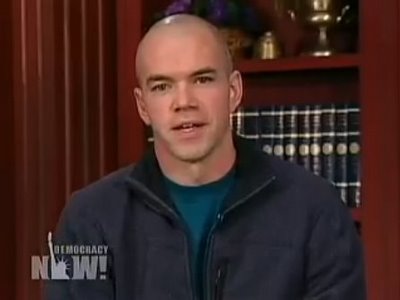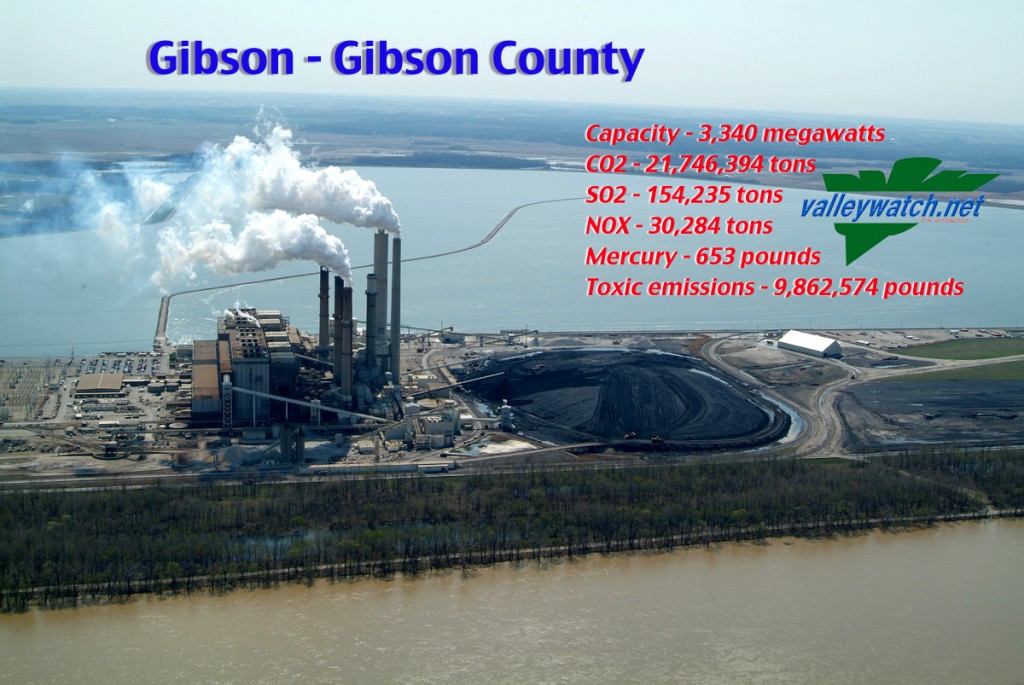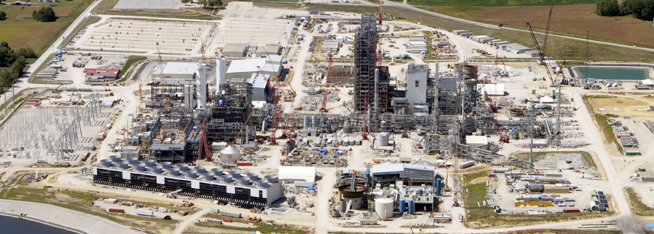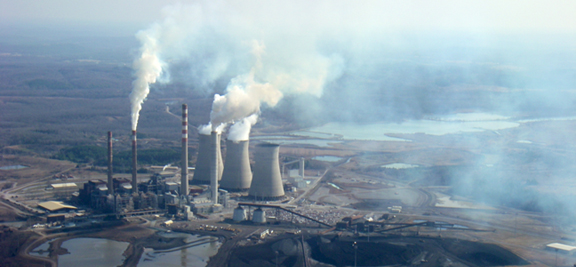Carbon Capture and Sequestration might soon be nothing more than a relic in a “might have been” history book.

Is the sun setting on so called "clean coal?" The answer to that became clearer this week as two set backs occurred. Shown is a picture taken July 16 of Duke Energy's now $3 billion Edwardsport IGCC plant that is under greater scrutiny due to scandal and huge cost overruns. Photo © 2011 John Blair
July 17, 2011-by John Blair, valleywatch.net editor
Most people who have studied the issue easily understand that coal is not clean and really cannot be made so, but that does not keep those who make big money mining and burning the black mineral from making those dubious claims.
Mining coal destroys entire ecosystems, burning it alters our climate, makes people sick and cuts lives short while disposing of its huge volumes of waste contaminates land and water alike.
But of course governments at all levels, still readily support nearly any proposal that describes itself as “clean coal” with massive taxpayer subsidies and lax permitting and enforcement in hopes that perhaps someday, coal might be consumed in ways that society will finally find acceptable.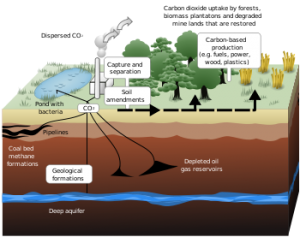
Sadly, every time promoters shout “clean,” the facts fail them.
The latest incarnation of the term says that coal can be made clean if they can utilize something that has this far, only existed in the greedy dreams of coal mine and power plant owners, Carbon Capture and Sequestration or CCS for short.
Lately though, those dreams have been more closely a nightmare.
Two events happened this week that sent CCS spiraling down as an option to keep coal as a viable energy option in the future.
Since the beginning of this century, CCS has been touted as the savior of coal since the idea was to use yet fully developed technology to “capture” carbon dioxide (CO2) emissions from burning or converting coal and then “sequestering” that carbon deep below the earth’s surface in rock formations where it would be stored for eternity.
First, bad news for CCS came when American Electric Power (AEP) announced they were ditching their multi-year very expensive experiment to capture CO2 from a conventional pulverized coal plant in West Virginia. According to AEP, the project “doesn’t make economic sense…” even though the US Department of Energy had given AEP $334 million subsidy to prove the CCS system viable in 2009.
AEP dropped the project in its second phase since it had gained success in a small demonstration project at their Mountaineer power plant for about two years. AEP’s admission that it cannot be justified economically reflects the fact that when the experiment was first started it was generally accepted that there would be a price placed by Congress on emissions of CO2 through a “cap and trade” program that was then considered imminent.
Of course, today, Republicans in Congress are doing everything they can to eliminate existing rules that call for eliminating coal emissions and have sworn to disallow anything that deals with trying to quell climate changing CO2 pollution.
Hopes for new-tech answers fades due to massive cost overruns from $1.2 billion to $3 billion.
CCS promoters suffered an even greater set back at the end of the week when testimony was filed by the Indiana Office of Utility Consumer Counselor (OUCC)declaring that Duke Energy had committed “gross mismanagement” and “concealment” in their quest to build the ill-fated Edwardsport Integrated Gasification Combined Cycle (IGCC) experimental plant in Indiana. Continue reading →
 Grasshoppers are funny little things. They come in several varieties. some fly, some simply hop. some look like they are armored and others look kind of fragile.
Grasshoppers are funny little things. They come in several varieties. some fly, some simply hop. some look like they are armored and others look kind of fragile.



